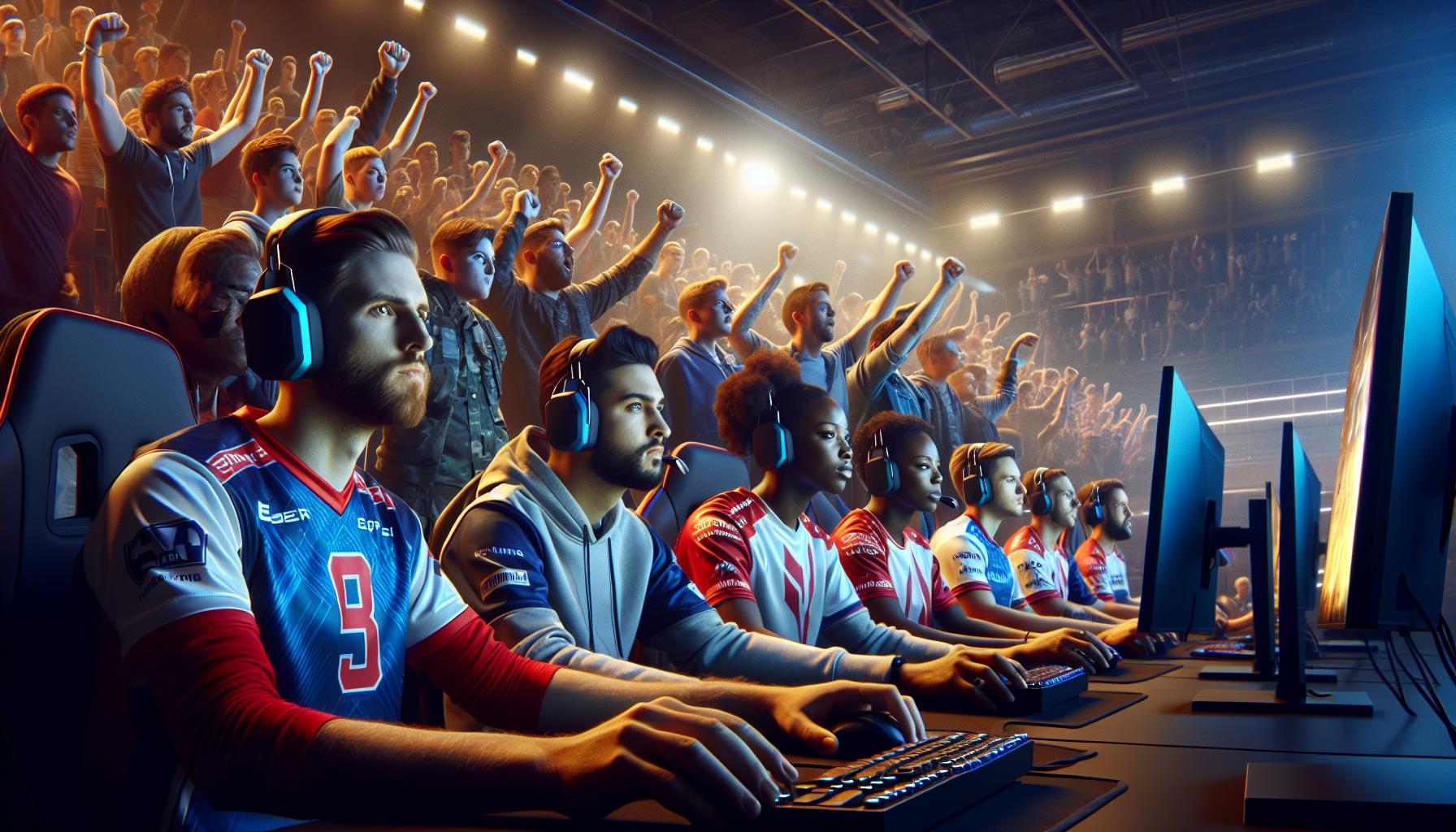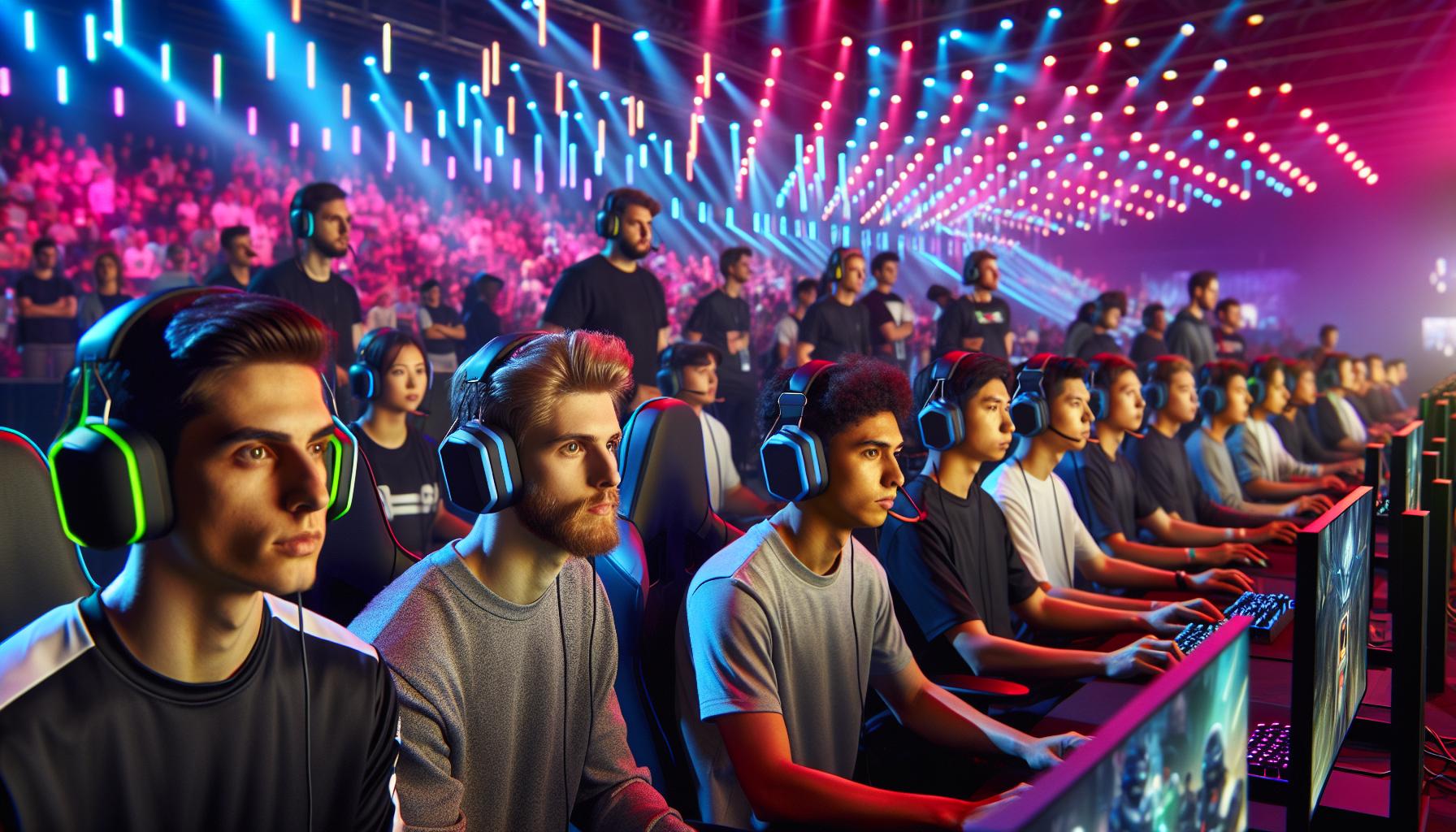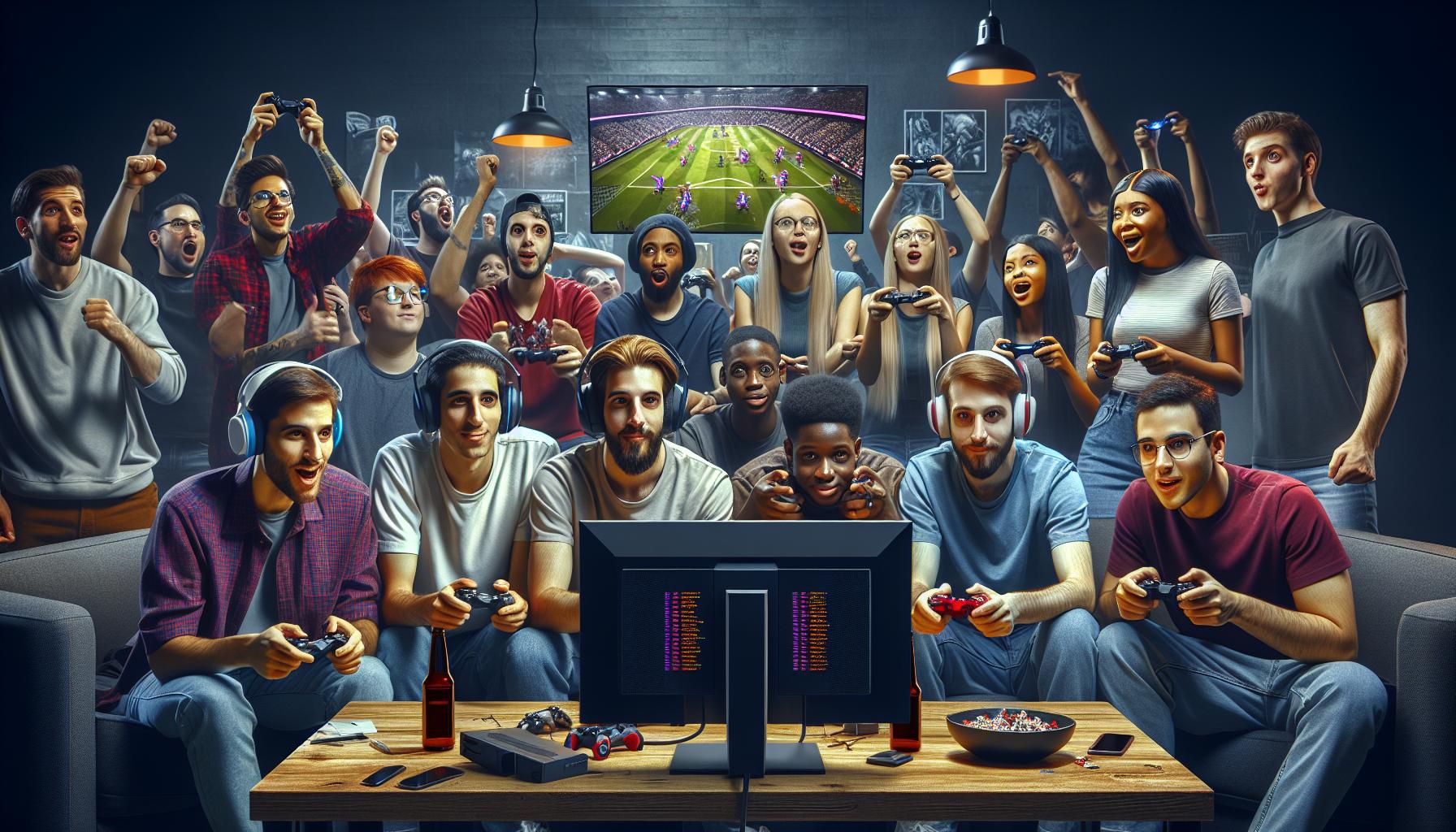Esports Sponsorships in 2024: How Brands Are Investing Billions in Competitive Gaming

As I’ve watched the esports industry explode over the past decade, one thing has become crystal clear: sponsorships are the lifeblood of competitive gaming. From energy drinks to tech giants, brands are pouring millions into esports teams, tournaments, and individual players like never before.
I’ve seen firsthand how the right sponsorship can transform an amateur team into a powerhouse organization. In 2023, the global esports sponsorship market reached $1.1 billion, and it’s showing no signs of slowing down. Whether you’re a brand looking to tap into the gaming audience or an esports organization seeking financial backing, understanding the intricacies of these partnerships has never been more crucial.
Key Takeaways
- The global esports sponsorship market reached $1.1 billion in 2023, with sponsorships accounting for 43% of total industry earnings
- Non-endemic sponsors (brands outside gaming) dominate with 65% market share compared to 35% for endemic sponsors, growing at 42% annually
- Digital integration offers multiple ROI opportunities, including in-game overlays, branded content, and social media amplification reaching 84% of active viewers
- Successful sponsorships like Red Bull and BMW demonstrate high impact through strategic partnerships, generating millions of impressions and strong brand recognition
- Key performance indicators for measuring sponsorship ROI include stream viewership, social media engagement, brand visibility, and conversion metrics
- Future trends point to blockchain integration, AI-driven personalization, and mobile esports partnerships as major growth areas in sponsorships
The Rise of Esports Sponsorship Revenue
Esports sponsorship revenue demonstrates remarkable growth across multiple sectors. The global esports sponsorship market reached $837.3 million in 2022, marking a 24% increase from the previous year.
Key Growth Indicators
- Sponsorship revenue accounts for 43% of total esports industry earnings
- Non-endemic brands increased investment by 75% since 2020
- Technology sector sponsors contribute $312 million annually
- Financial services partnerships grew by 82% in the past two years
Regional Distribution
| Region | Sponsorship Revenue (2023) | Growth Rate |
|---|---|---|
| North America | $419.5M | 31% |
| Asia Pacific | $324.8M | 28% |
| Europe | $276.2M | 25% |
| Rest of World | $79.5M | 19% |
Emerging Sponsorship Categories
- Digital payment platforms partner with major tournaments
- Automotive manufacturers sponsor professional teams
- Insurance companies create esports-specific coverage products
- Telecommunications providers offer gaming-optimized services
- Direct team sponsorships increased by 65% since 2021
- Tournament prize pools expanded through corporate partnerships
- Broadcasting rights deals tripled in value since 2020
- Merchandise collaborations generated $147 million in revenue
The data reflects sustained expansion across diverse revenue streams, with traditional sports sponsors entering the esports ecosystem at an accelerated rate.
Types of Esports Sponsorship Deals

Esports sponsorship deals come in distinct categories, each offering unique value propositions for brands and teams. These partnerships create revenue streams that support competitive gaming organizations, events and infrastructure.
Naming Rights Partnerships
Naming rights represent premium sponsorship arrangements where brands secure title placement on team names, venues or tournaments. Cloud9’s “TSM FTX” $210 million naming deal and Intel’s ESL partnership demonstrate the scale of these agreements. Tournament organizers generate 45% of their revenue through naming rights sponsorships, with deals averaging $8.5 million annually for major events.
Equipment and Hardware Sponsors
Equipment sponsorships provide essential gaming gear while creating authentic brand integration opportunities. Gaming peripheral companies like Logitech, Razer and HyperX supply:
- Pro-grade keyboards, mice and headsets for competitive play
- Custom-branded equipment for team merchandise
- Technical support and product testing feedback
- Tournament hardware infrastructure
Endemic vs Non-Endemic Sponsors
Endemic sponsors operate directly within gaming and technology sectors, while non-endemic brands come from outside industries. The current sponsorship landscape includes:
| Sponsor Type | Market Share | Annual Growth |
|---|---|---|
| Endemic | 35% | 18% |
| Non-Endemic | 65% | 42% |
Endemic sponsors include:
- Gaming hardware manufacturers
- Computer component brands
- Gaming energy drinks
- Streaming platforms
- Financial services
- Automotive companies
- Insurance providers
- Consumer packaged goods
Benefits of Sponsoring Esports Teams

Esports sponsorships deliver measurable returns on investment through targeted audience engagement and digital integration opportunities. The strategic advantages extend across multiple business dimensions, creating value for both sponsors and teams.
Brand Exposure to Young Demographics
Esports sponsors gain direct access to the coveted 18-34 age demographic, with 73% of esports viewers falling within this range. Major tournaments like League of Legends World Championship attract 5.1 million concurrent viewers, delivering unprecedented brand visibility to Generation Z consumers. The engagement metrics show:
| Demographic Metric | Value |
|---|---|
| Core Age Range | 18-34 years |
| Average View Time | 2.3 hours |
| Brand Recall Rate | 71% |
| Weekly Viewership | 8.4 hours |
Digital Marketing Opportunities
Digital integration in esports creates multiple touchpoints for sponsor visibility across streaming platforms, social media channels & virtual environments. Sponsored content generates:
- In-game overlay placements reaching 84% of active viewers
- Custom branded content achieving 3.2x higher engagement than traditional ads
- Social media amplification through team channels with 45% higher click-through rates
- Live stream integrations generating 2.7 million hours of branded content viewing
- Virtual merchandise collaborations producing $12.4 million in additional revenue
- Interactive fan experiences leading to 62% increased brand consideration
- Real-time viewership analytics
- Social media engagement tracking
- Click-through conversion monitoring
- Fan sentiment analysis
- Brand mention measurements
- Digital sales attribution
Key Esports Sponsorship Success Stories

Successful esports sponsorships create lasting impact through innovative campaigns and strategic partnerships. These notable examples demonstrate the effectiveness of well-executed sponsorship strategies in the esports ecosystem.
Red Bull in Esports
Red Bull’s esports presence spans 15 years of strategic partnerships across multiple gaming titles. The energy drink brand operates dedicated gaming studios in London, Tokyo and São Paulo, hosting over 300 competitive events annually. Their partnerships include exclusive deals with Ninja, who gained 1.2 million followers during their first collaborative year, and Cloud9’s League of Legends team, generating 42 million impressions in 2022.
| Red Bull Esports Metrics | Value |
|---|---|
| Annual Gaming Events | 300+ |
| Gaming Studios | 3 |
| Partner Reach (Ninja) | 1.2M new followers |
| Cloud9 Campaign Impressions | 42M |
BMW’s United in Rivalry Campaign
BMW’s United in Rivalry initiative connects five premier esports organizations: Cloud9, Fnatic, FunPlus Phoenix, G2 Esports and T1. The campaign generated 48 million social media impressions in its first month through collaborative content creation. BMW’s custom-designed team vehicles, featured at major tournaments, achieved 92% brand recognition among esports viewers. The partnership includes:
| Campaign Elements | Impact |
|---|---|
| Social Media Reach | 48M impressions |
| Brand Recognition | 92% |
| Partner Teams | 5 |
| Content Series Views | 12M+ |
The initiative leverages inter-team rivalries to create engaging storylines, producing viral social media moments that increased BMW’s gaming audience by 38% in 2022.
Measuring Sponsorship ROI in Esports
Key Performance Indicators (KPIs)
Esports sponsorship ROI measurement relies on specific digital metrics to track performance:
- Generate stream viewership data through concurrent viewer counts, watch time metrics, peak audience numbers
- Track social media engagement rates across posts, shares, mentions, follower growth
- Monitor brand visibility through logo placement impressions, broadcast time exposure, branded content views
- Measure audience interaction via click-through rates, website traffic, conversion tracking pixels
- Calculate media value equivalency based on traditional advertising costs for similar reach
Digital Analytics Tools
Modern analytics platforms provide comprehensive sponsorship tracking capabilities:
- Stream Elements tracks real-time viewership metrics across Twitch, YouTube Gaming, Facebook Gaming
- Newzoo’s Esports Analytics measures brand exposure duration, placement quality scores
- Nielsen Esports Fan Insights analyzes brand recall rates, sentiment analysis, demographic data
- Google Analytics monitors website traffic sources, user behavior patterns, conversion paths
- Social listening tools track brand mentions, hashtag performance, engagement metrics
ROI Metrics Table
| Metric Category | Key Performance Indicators | Industry Benchmark |
|---|---|---|
| Viewership | Average Concurrent Viewers | 15,000+ |
| Engagement | Social Media Interaction Rate | 4.5% |
| Brand Exposure | Logo Visibility Time | 12+ minutes/hour |
| Website Traffic | Click-Through Rate | 2.3% |
| Conversion | Brand Consideration | 65% |
Brand Impact Assessment
Quantitative measurement methods evaluate sponsorship effectiveness:
- Compare pre-sponsorship vs post-sponsorship brand awareness metrics
- Analyze viewer sentiment through automated content analysis tools
- Track purchase intent changes among esports audience segments
- Monitor direct sales attribution through promotional codes
- Measure share of voice increases during sponsored events
- Calculate cost per thousand impressions (CPM) across streaming platforms
- Track merchandise sales lift during sponsored tournaments
- Measure direct revenue from branded content partnerships
- Compare sponsorship costs against traditional advertising alternatives
- Evaluate long-term brand value appreciation in gaming demographics
Future Trends in Esports Sponsorships
The esports sponsorship landscape is transforming through emerging technologies, creating innovative partnership opportunities. Blockchain integration enables fan tokens and NFT collectibles, with 12 major esports organizations launching digital asset programs in 2023.
Artificial Intelligence drives personalized sponsorship activations through:
- Analyzing viewer behavior patterns for targeted brand placements
- Creating dynamic in-game advertising that adapts to viewer preferences
- Automating performance tracking across multiple platforms
Mobile esports sponsorships show exponential growth in emerging markets:
- Southeast Asia mobile tournament viewership increased 112% in 2023
- India’s mobile esports sponsorship revenue reached $38 million
- Latin American brands invested $24 million in mobile gaming partnerships
Cross-platform integration expands sponsorship reach through:
- Synchronized brand campaigns across PC, console & mobile platforms
- Metaverse activations featuring virtual brand experiences
- Live streaming integration with traditional sports broadcasts
| Sponsorship Category | Growth Rate (2023-2024) | Projected Value 2024 |
|---|---|---|
| Blockchain/Crypto | 156% | $312M |
| Mobile Gaming | 89% | $245M |
| Metaverse | 234% | $185M |
| AI Integration | 167% | $156M |
Data-driven sponsorships leverage advanced analytics:
- Real-time ROI tracking through blockchain-verified metrics
- Machine learning algorithms predicting sponsorship performance
- Automated brand safety monitoring across digital platforms
The rise of micro-sponsorships enables:
- Direct brand partnerships with individual content creators
- Community-funded tournament prizes
- Specialized sponsorship packages for niche gaming communities
Interactive sponsorship formats enhance engagement through:
- Augmented reality brand activations during broadcasts
- Fan-controlled advertising experiences
- Gamified reward systems for viewer participation
These innovations reshape traditional sponsorship models while creating new revenue streams in the esports ecosystem.
Conclusion
The explosive growth of esports sponsorships shows no signs of slowing down. I’ve watched this industry evolve from niche gaming partnerships to mainstream brand investments worth billions. The data speaks for itself – with sponsorship revenue reaching $837.3 million in 2022 and innovative campaigns reshaping traditional marketing approaches.
As we look ahead I’m confident that emerging technologies and diverse revenue streams will create even more opportunities for brands and teams alike. From blockchain integration to AI-driven activations the future of esports sponsorships is bright. For brands looking to connect with younger audiences esports partnerships aren’t just an option anymore – they’re becoming essential for staying relevant in today’s digital landscape.



